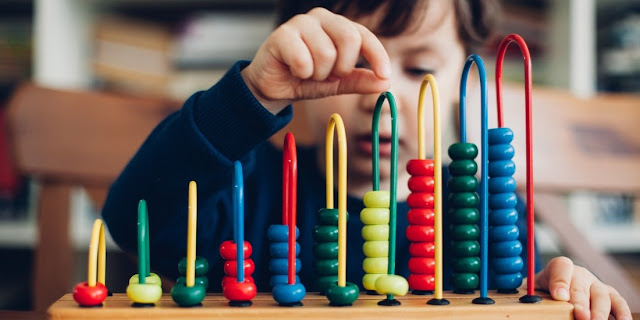Learn Counting Numbers
Learn Basics:
Children square measure ready to counting number from memory long before they perceive variety the amount that every number represents.
For example, simply because a baby is in a position to count to twenty, doesn't essentially mean that they will accurately bring you twenty beads.
It relates a variety of words to various quantities.
Children pick up at understanding amount through following with estimation.
Estimating before count builds a core for understanding variety magnitude, and engages a baby in seeing whether or not their predictions square measure realistic.
Estimation could be a different and additional refined ability from the count, however will develop aboard count.
Counting Number shows however variety quantities relate to every difference.
For example, eight is one over 7; eight is one but nine.
Counting objects initiates the ability of 1:1 correspondence – the understanding that each object will solely be counted once.
Children tend to count a similar object multiple times and that they might still do thus from ages two-five. correct count develops with expertise and maturity. youngsters can count objects repeatedly, till they develop this ability of 1:1 correspondence.
Kindergarten-aged youngsters work on 1:1 one correspondence count to twenty. With mastery of this ability, numerical values and relationships square measure explored victimization logic.
Sorting could be a natural element to count objects and therefore the application of thought. Sorting, classifying, creating comparisons, and organizing info square measure the inspiration for additional advanced mathematical thinking and decision-making.
Sorting by form, color, or size square measure useful precursors to learning to type by numbers (shape, color, and size square measure additional obvious and noticeable attributes to children).
By learning to type, a baby acknowledges the attributes of AN object (e.g., color, shape, size, etc.). method|the method} of sorting is that the process of grouping objects that share similar attributes, a natural and demanding part of understanding that numbers structure different numbers.
Just bear in mind
Reminder:
Children learn to count accurately at a spread of ages.
It is typical for the correct count to become secure around ages five-six.
Show youngsters the way to count objects, however, don't linger over accuracy at ages two – three.
Children learn through expertise. don't correct – simply show by modeling or count along.
Exploration and imagination square measure rampant in babyhood and infrequently overshadow learning science skills within the educational institution years. That’s OK! Trust that count skills can come back and don't force it.
Some youngsters don’t count accurately till concerning age five, despite direct teaching. If one to create an understanding before a baby is developmentally prepared, one risks cultivating AN early aversion to science.
Helpful Tips:
Just do it! the count is straightforward to try and do daily, as youngsters will count anything: lamp posts, cars, room drawers, photos hanging within the doctor’s workplace. science is everyplace in our world!
Collect materials your kid will safely use for active counting; place them in an exceedingly bag or jar and decide a time to count and re-count them once more and once more.
Counting home items is astonishing
ly fun for kids – previous keys, dried food, cereal.
Count from left to right – Encourage the discipline of count from left to right at AN early age. youngsters within the U.S. use the quantity line to specific thought in class and skim from left to right. the quantity line corresponds with English reading from left to right (tracking).
Count teams of things – this can be particularly useful for developing AN ease and luxury in operating with numbers, ANd for building an understanding of a variety of parts (e.g., twenty-eight is 2 tens and eight ones). Some guiding queries once count collections.
work with numbers, building an understanding of their parts (28 is 2 tens and eight ones); count collections is nice for building this understanding
Find opportunities to estimate once you’re counting, “How several apples do one suppose square measure on this table?” or “Let’s estimate what number before we tend to count.”
Easy stuff you will Do
Build count opportunities into existence. enable your kid to figure severally and simply observe.
When the change of state, entertain your kid by giving them ingredients like beans or vegetables to count.
Count what number steps there square measure on a stairway or what number steps it takes to induce from one area to a different, from your front entrance to the automotive. Switch it up – currently, hop, skip or jump. what number of hops will it go forgo a similar distance?
Point out ordinance signs as you drive along with your kid. Show your kid however 25mph in an exceeding faculty zone feels vs. sixty-five mph on the route – a sensible manner of showing however twenty-five is a smaller amount than 65.
Count to ten as your kid washes their hands. Bonus – It ensures that they’ll wash their hands for AN acceptable quantity of time!
Create a “Number of the Day” and tell it at mealtimes – eight grapes, 8 carrots, 8 raisins.
Model the way to keep track of counted objects once your kid is prepared (around ages four – 5).
For example, learn to count by sorting objects into a counted and multitudinous pile.
Gather a pile of objects – the multitudinous pile. Count “1”, and move one object from the multitudinous pile to the counted pile. Count “2”, and move another object from the multitudinous pile to the counted pile.
Source: The Soft Roots




Comments
Post a Comment